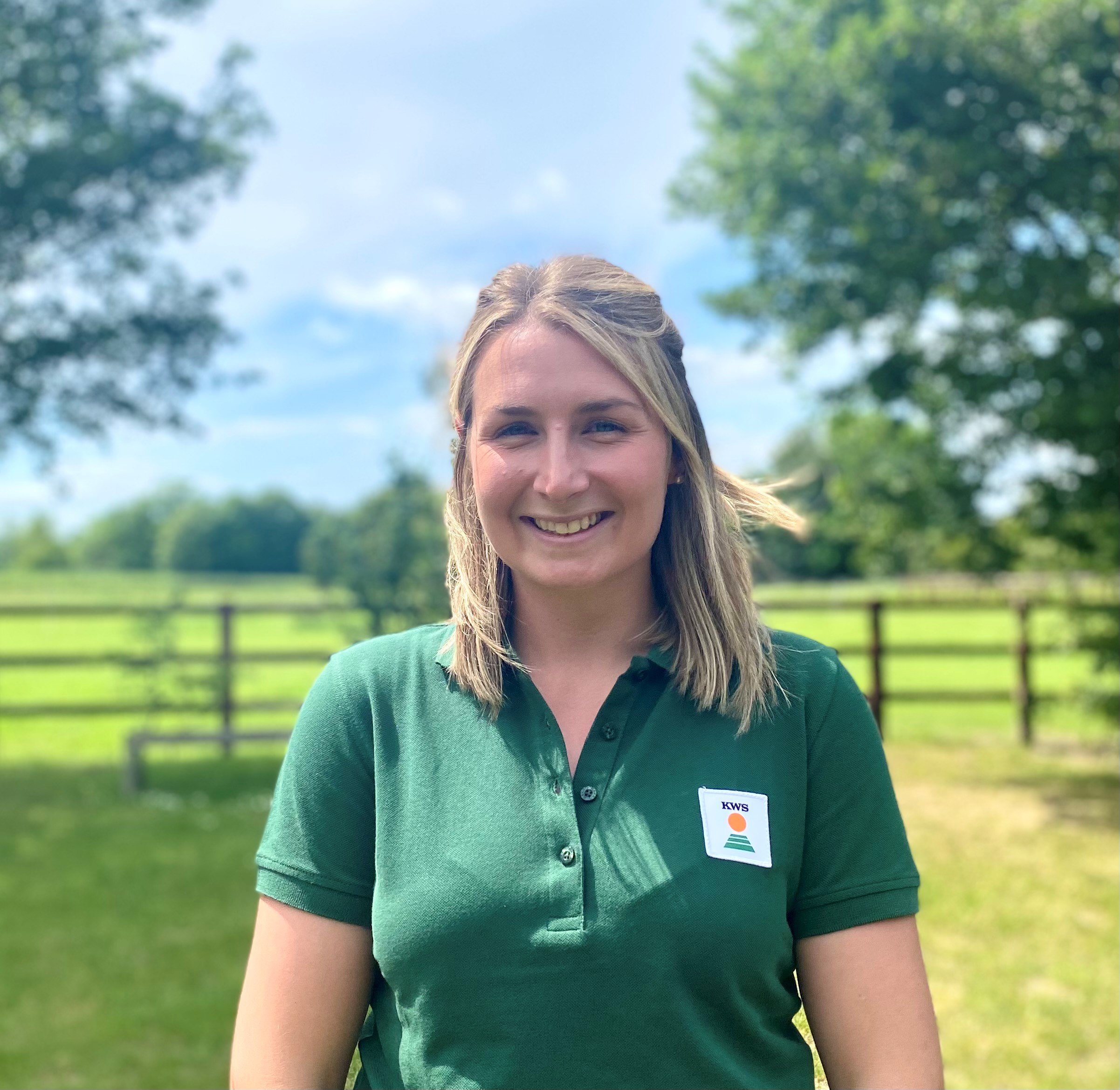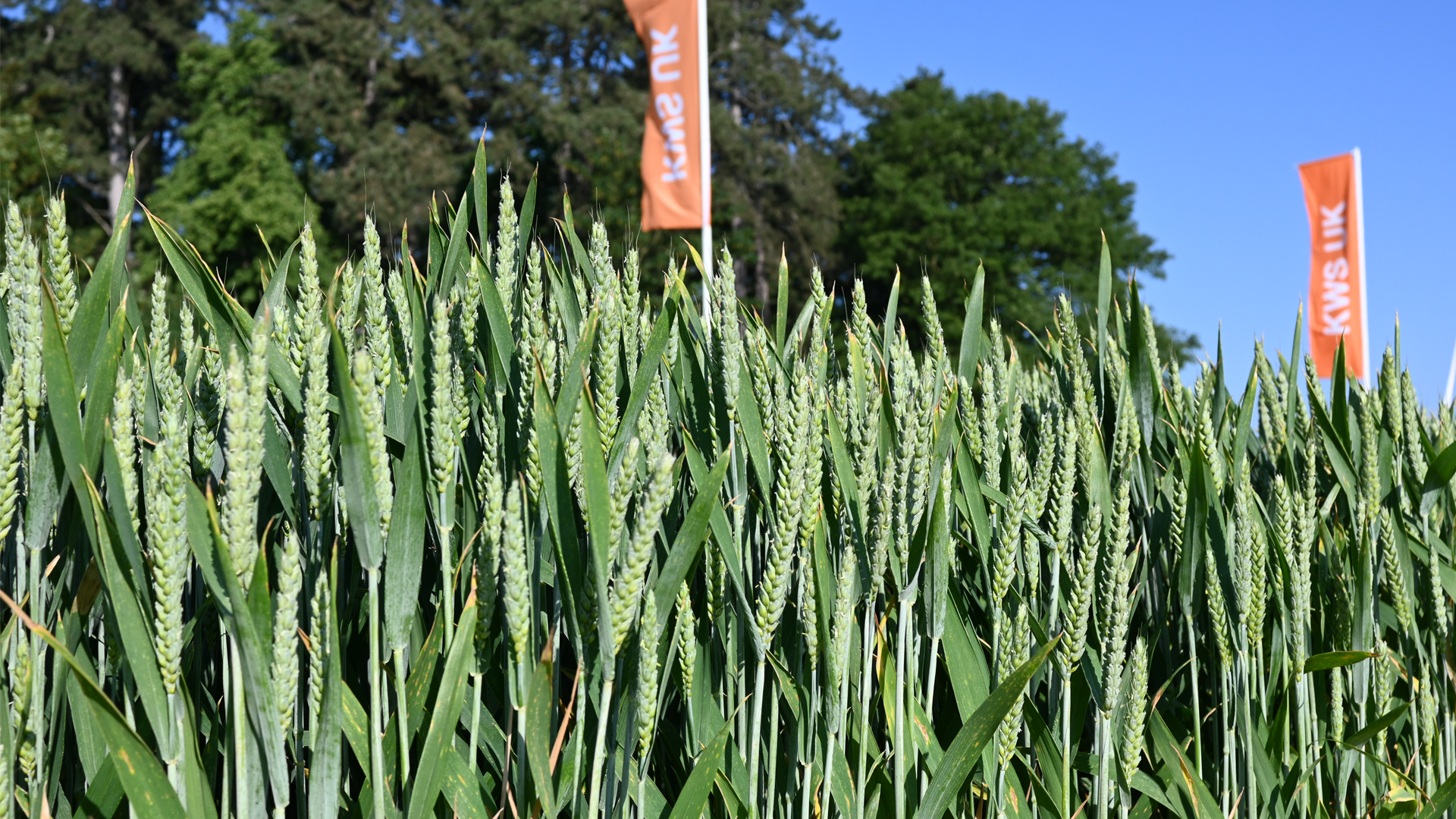How to get the most out of the UK's most popular wheat
Hard Group 4 wheat variety KWS Dawsum accounts for around 20% of all wheat grown in the UK this year with a wealth of management experience built up around how to get the most out of the variety,since its commercial launch in 2022, says KWS UK conventional crops product manager Dr. Kirsty Richards.
"A Costello/Kerrin cross, KWS Dawsum is the most popular UK wheat variety bar none, beating the blockbuster varieties of the last 20 years like Clairein 2003/04 with its 19% market share and JB Diego in 2013/14 with a 17% market share.
"This level of momentum across both growers and the trade as a whole, mean it's going be the 'go to' choice for UK feed wheat producers and buyers for many years to come.
"It's a near perfect combination of its parents' high points with Costello still having the highest specific weight and HFN of any variety on the AHDB RL and KWS Kerrin’s proven consistency of performance across a range of regions, soil types and drilling dates.
"KWS Dawsum has an HFN of 299 and a specific weight of 79.9kg/hl plus the versatility of KWS Kerrin and then adds to this with a wide drilling window and an improved disease resistance profile."
Latest RL data shows KWS Dawsum can deliver high yields across the rotation, with a yield of 106% when drilling early - before 25th Sept- and 103% in the mainstream and late sown slots, she points out.
"It's a variety with an excellent disease package which includes 6.3 for Septoria and 9 for yellow rust to deliver an untreated yield of 91%, second only to KWS Extase on the RL.
"Plus, that high specific weight means there is a lot of room to play with before it starts dropping down below minimum standard for feed of 72kg/hl."
Two very different years of production have shown Dawsum very much living up to its heritage and RL performance with some key management strategies emerging to help growers get the most out of the variety, Kirsty Richards says.
Using Dawsum's rotational flexibility to the full
"KWS Dawsum's high yield potential in both the earlier sowing window of before 25th September and in the main sowing slot of end of September to the end of October gives growers a range of options in the rotation, she explains.
"I don't think you need to worry too much whether you drill Dawsum in September or at the back end of the year. Its latest safe sowing date on the RL is end of Jan so you have opportunities to drill into the new year, too.
"Depending on when you drill, it's advisable to adjust seed rate accordingly. If you're growing into a good seedbed in early September 200 - 250 seeds/m2 should produce a good plant population.
"But if you're drilling towards the end of the year or when seedbeds are less than optimal, this may need to be lifted to 425 - 500 seeds/m2.
"These should be adjusted for soil type too with heavier soils requiring a slightly higher seed rate than lighter ones."
"As in this last year, changeable weather patterns in the autumn mean flexibility of drilling date is a real advantage so conditions can be chosen that suit drilling without too much concern over final yield potential.
"We've seen crops of KWS Dawsum drilled in January doing almost as well as those sown early the previous autumn. RL data and grower experience suggests Dawsum performs equally well as both a first and second wheat.”
Making full use of disease resistance
The best results with KWS Dawsum have been achieved when its inbuilt disease resistance is managed alongside a strategic agronomic programme, Kirsty Richards says.
"With greater demand on machinery, it’s imperative to manage workloads as best as possible and this when utilising the disease resistance properties of KWS Dawsum can really help.
"As with all varieties, regular monitoring of the crop is essential to make the best decisions around fungicide applications.
"However, it is worth remembering that KWS Dawsum’s strong 9 rating for yellow rust resistance will allow growers to stretch application windows if the weather is not on your side."
To underline this, KWS has carried out work carried in the 2022/23 season looking at wind speed data on the 20 days either side of a normal T1 spraying date, she points out.
"Results showed many counties experienced 40% of days with an average wind speed of over 10 mph.
"So, in that critical T1 period, only 3 out of every 5 days were potential spray days, and that is before you take into account other limiting factors such as rain etc. In short, KWS Dawsum's disease resistance can buy you valuable time at spraying without compromising control."
While there are varieties with higher Septoria resistance scores on the RL, in the field KWS Dawsum’s score of 6.3 has proved a useful variety feature, she says.
"The loss of certain key actives for use against septoria and pressure to protect those that are left, means growers have had to consider a stronger IPM approach rather than relying on chemistry alone.
"Trials carried out with Corteva have shown KWS Dawsum to have a good untreated yield but it also responds very well to fungicides with an additional 1.0t/ha resulting from suitable fungicide treatment even in high pressure years.
"With good, well-timed chemistry, Septoria control has proven to be easily achieved in the variety even in a high-pressure year like 2023."
Two very different years of production have shown Dawsum very much living up to its heritage and RL performance with some key management strategies emerging to help growers get the most out of the variety
Taking advantage of stiff straw
KWS Dawsum’s pair of 7s for resistance to lodging with or without PGRs has proven a good safety net for growers in the field over the last two years of widescale production, Kirsty Richards points out.
“Stiff straw reduces the potential for lodging and yield loss plus it provides the insurance of a strong crop come harvest with fast and efficient harvesting.
“But like any variety, when the conditions are such that we saw pre-harvest in 2023 with high winds and rain in battering fully developed crops, it is not infallible.
“KWS Dawsum is one of the lowest risk varieties in the hard Group 4 sector. Nevertheless, reducing PGRs should be considered very carefully with appropriate decisions being made with regard to individual based on drilling date, soil type, fertility, and weather-related lodging risks.”
Dawsum responds well to nitrogen with a clearly identifiable 'sweet spot' for optimum applications identified in trials carried out by KWS and Yara, says KWS UK technical trials manager Olivia Bacon.
"This is the case in terms for both yield and protein content," she explains. "But what application rate is the most economical in any year is obviously dependent on both grain and N prices at that time.
"Trials carried out in 2023, at Brixworth Farming in Northamptonshire, showed KWS Dawsum to start responding when 160kgN/ha was reached and this kept increasing right up to the highest application in the trials of 340kg N/ha.
"Using a 28:40:27 NPK fertiliser, this corresponded with a yield of 12.1t/ha and although yields did increase from the 11.9t/ha delivered by an application of 280kg N/ha, this was not statistically significant.
"In addition to its outright yield potential, KWS Dawsum has always been favoured by growers because of its ability produce high levels of protein in the grain and again this was in evidence in the KWS/Yara trials.
"Results for grain protein typically followed the yield curve. Highest protein content was 11.7% achieved with the top 340kg N/ha rate with 380kg N/ha producing 11.2% although a 220kg N/ha application produced a very respectable yield of over 11.5t/ha and a protein content of 10.2%.
"Even at 160kg N/ha KWS Dawsum produced 10t/ha yields in the trials.
"Medium levels of Septoria were seen across the trials and it is thought the extra N helped keep the crop greener for longer which contributed towards the additional yield and protein levels seen."
Optimising nitrogen application rates
Obviously, identifying optimum nitrogen application rates for any one growing situation depends on an analysis of soil and in-vitro crop tests, with Yara leaf tissue sampling being used in the Northamptonshire trials to ascertain this, she points out.
"Optimum application rates will be dependent on the precise situation in which the variety is sown, but our own trials and the ones conducted with Yara suggest for KWS Dawsum these lie typically between 175 - 240 kg N/ha.
"Whilst higher application rates than this may deliver higher yields and protein contents, they may not always be economically justified with situation changing in line with the relationship between grain and fertiliser prices.
"When meeting any crop’s nutrient requirements, the intention should always be to ensure a steady but consistent supply through the growing period.
"Whatever the fertiliser product chosen, our own trials and practical insights from the field have shown the best results with KWS Dawsum are achieved with a three-way split of nitrogen to meet the crop's needs as it grows.
"Early spring management should target a plant population of 260 plants/m2 with each plant carrying between 3 and 4 tillers to give a total of just under 1000 tillers in early spring. More than this number creates a structure which is hard to support."
"From GS31 back tillers start to die off with the AHDB wheat growth guide indicating 30% of final nitrogen will be taken up at this point and this is the time when temptation is greatest to apply a large dose of nitrogen.
"While there are good arguments for this in some years and areas due to the weather patterns, it will increase the retention of unnecessary tillers in any variety and lead to increased lodging risk."
All in all, I would say KWS Dawsum has been as good as gold in the field and as we understand more and more about how to get the best out of it, it's going to remain a grower favourite for many years to come."
You can get a lot of insight into how to manage KWS Dawsum by looking at its parents, says Agrii technical seed manager John Miles.
"When people started to grow KWS Dawsum for the first time, many were surprised by the time it took to get going, but perhaps that was because they had forgotten how much later Costello was to start growing in the spring.
"If you look at something like KWS Extase, then Costello and Costello crosses can take some time to get going and Dawsum can appear slow by comparison.
"Costello was also one of those varieties that you could drill quite early and that's where people thought KWS Dawsum would be best placed. Which is true but there are some watch-outs, the same as there were for Costello.
"The RL trials are drilled in the second or third week of October, so what you see on the RL is a septoria rating for that date.
"But all of our work suggests you can adjust septoria score up or down from this significantly, by as much as 0.3/week, depending on how you move your drill date.
"So, if you have an RL septoria score of 6.3, which KWS Dawsum has, and you drill it in the second week of September, that score is more like a 5 or just over.
"While Dawsum has all the right attributes for being mid-September drilled, such as standing ability and grain quality and things like that, you do need to be mindful that septoria is still going to need looking after a bit if you do drill early.
"There are a number of varieties you could talk about drilling safely in September and Dawsum would certainly be one of those, but because its performance when later drilled is still pretty good, you do have other options to consider timing wise.
"Dawsum has many of Costello's strong points, but there are some specific elements of KWS Kerrin which add to its appeal, with later drilled performance being one of those and really adding to its all-round versatility and flexibility in the rotation.
"There's also Dawsum's Timaru package for yellow rust resulting in a 9 for resistance which has proved very welcome, particularly as there are a lot of yellow rust susceptible varieties out there.
"There's a growing weakness of brown rust in the RL, too, with a number of varieties with reasonable market share having not such a good brown rust score, but Dawsum is pretty good in that respect with a 7 on the RL."
Good as gold in the field
Some people did see the crop lodge last year despite its 7 for resistance to lodging with or without PGRS, he points out.
"It was probably a case of wrong time wrong place and it was in no way restricted to Dawsum.
"If crops were drilled that bit earlier, got early fertiliser on in Febuary to kick them on and there was then no opportunity to get PGRs applied until April because of the weather, it became a bit of a perfect storm.
"Efficacy of any PGRS applied was also affected by the ongoing cold wet weather and then the summer storms hit. So, it was a worst-case scenario with a lot of wheat and barley affected.
"The other thing is that there was so much Dawsum grown, affected fields did tend to get noticed but the fact that so much of it has been drilled for harvest 2024 suggests it has performed well for the vast majority of growers."
Another point in the variety’s favour is it high specific weight which has been shown to hold up well in the field, John Miles points out.
"Certain varieties that have a borderline bushel weight in an RL situation are going to struggle to achieve that in a farm situation
"You can't manage specific weight up. It's yours to give away so you have to start with a high value and that's where KWS Dawsum has huge appeal because it has that high specific weight to start with.
"All in all, I would say KWS Dawsum has been as good as gold in the field and as we understand more and more about how to get the best out of it, it's going to remain a grower favourite for many years to come."
Your consultants





